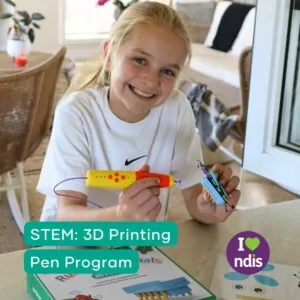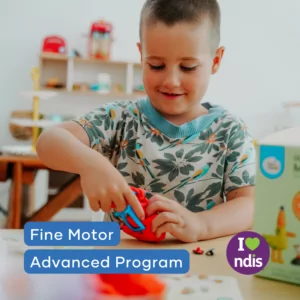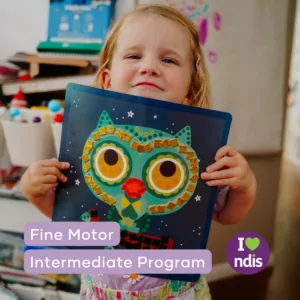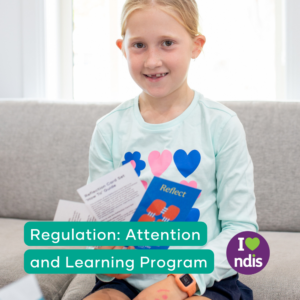

To help you do this time-consuming, important job as effectively as possible, here is my go-to guide for establishing the type of relationships that help your child’s teacher to appreciate how wonderful your child is.
1. Educate yourself
Before approaching teachers, take the time to educate yourself about your child’s neurodivergence. You cannot expect teachers, who are navigating an overpacked curriculum, the needs of multiple students, the requirements of teacher registrations, extracurricular club demands, report writing and multiple emails from parents a day (to name but a few things), to be able to dive into researching your child’s particular needs. Understanding and knowing your child, what motivates them, what overwhelms them and how they can best regulate themselves is an essential first step to communicating with your child’s teacher. Once you have developed your rich understanding, you are better prepared to begin informing others. Creating clear, considered and concise information that can be used to inform teachers about the best ways to support your child can only be done well if you have done your homework first. Understand the specific challenges and strengths of your child’s brain and figure out which information is the most important to understand first. You need to give the teachers enough information, but not overwhelm them with all the information in one hit. Taking the time to thoughtfully prioritise your communication will empower you to communicate effectively and advocate for your child’s unique needs.
In addition to educating yourself about your child, you need to do your best to educate yourself about their school. What kinds of expectations do they have at the school? What kinds of ‘classroom management systems’ do they use and how are they used? Not all families have the luxury of choice, so researching these answers is not necessarily about ‘school shopping’ but more about helping you to understand the ecosystem that the teacher is operating in.
The way that a school discusses behaviour and any tools they employ will also help give you valuable information about how your child is likely to feel at school. For example, a school that uses a class Dojo, (an online avatar that is awarded points by teachers) might be aligned with your ND child’s needs because it helps with motivation and making expectations tangible. Alternatively, it might be a signal that the school relies heavily on extrinsic motivation to ‘control behaviour,’ which your child has no chance of keeping up with and might add anxiety to your ND child’s day.
Other important questions to find out about at the school is:
- What kind of learning support is offered to students and how is this determined?
- What is the educational philosophy of the school?
- How does the school teach children about their brain and executive functioning and higher thinking skills?
- What kind of differentiation is offered by the school?
- How has the school catered to students with neurodiversity in the past?
- What are the school’s main values?
- What are the chains of communication at the school?
- How is communication about students best shared? (I think that having things in writing is always ideal because people can refer back to it).
- What is the policy of the school regarding outside therapists and allied health workers?
- How does the school organise meetings to discuss support plans for ND children and how often will reviews occur?
2. Establish respect, rapport and open communication (fancy talk for ‘be kind’)
Teachers are incredibly overworked and underpaid. They also have their school bosses, the Department of Education and the parents of all the students they teach constantly making demands of them. Most teachers work in the profession because they love kids and want to help them learn. Keep this in mind before you bombard your child’s teacher with demands. Approach the relationship with the attitude of, ‘How can I best support you to support my child?’ When you come with this attitude, instead of a combative one, your child’s teacher will feel it. Be proactive about establishing this tone to your relationship and don’t wait until you have complaints to make contact. Kindness goes a long way to helping your child’s teacher feel motivated to go the extra step to support your child.

3. Outsource
If you are finding it difficult to educate your child’s teacher on effective support for your child, offer them easy ways to gain the information they need from elsewhere. Remember, they are busy. They are unlikely to have time to read a whole book, but they might watch a TikTok, listen to a podcast or watch a succinct YouTube clip or read a short article. They also might be okay with you offering them access to one of your allied health therapists such as an occupational therapist so that they can communicate directly with them. Offer to create support materials for your child that they might find useful in the classroom, for example social stories of the class routine or visual checklists for emotional regulation that all children in the classroom can consult when they need.
4. Collaborate on strategies
Work collaboratively with teachers to develop strategies that support your child’s learning while still aligning with school values. Discuss potential accommodations, modifications, and interventions that can be implemented in the classroom. This may include adjusted seating arrangements, additional breaks, or alternative assignments that cater to your child’s needs. Share resources with teachers that offer insights into your child’s neurodivergent brain. Coming to your child’s teacher with ideas about how to solve a problem is far more conducive to collaboration than just raising the problem. For example, if you need an assignment modified, suggest a way that your child can demonstrate their learning. Even if that doesn’t end up being the final solution, the fact you didn’t just expect the teacher to figure out how to modify the assignment, will get the ball rolling in the way of accommodations and adjustments that can be tried. The more informed teachers are, the better equipped they’ll be to create an inclusive and supportive classroom environment. When we know better, we can do better.

5. Help establish inclusion-culture
Help the teacher to establish a culture of inclusion and respect in the classroom by offering to talk to the class, using your connections with other families and advocating for your child within the community. By speaking directly and positively about your child’s differences, you may open up friendships you never knew possible, give undiagnosed children the chance to be understood or simply help to shift the undeserved stigma around neurodiversity. We have to be the change we want to see in the world.
Advocating for your neurodivergent child with teachers requires open but thoughtful communication and a deliberate effort towards creating an inclusive learning environment. It won’t happen on its own, but you have the tools to improve school for not only your child, but all children. By fostering understanding and appreciation of the vast and beautiful variety of bodies and brains that the world has, you not only contribute to your child’s academic success but also promote a more inclusive educational experience for all students.
Good luck, you’ve got this.
Love, Holly.
1 FEBRUARY 2024
WRITTEN BY HOLLY KARTEN
ND PARENT | EDUCATOR












